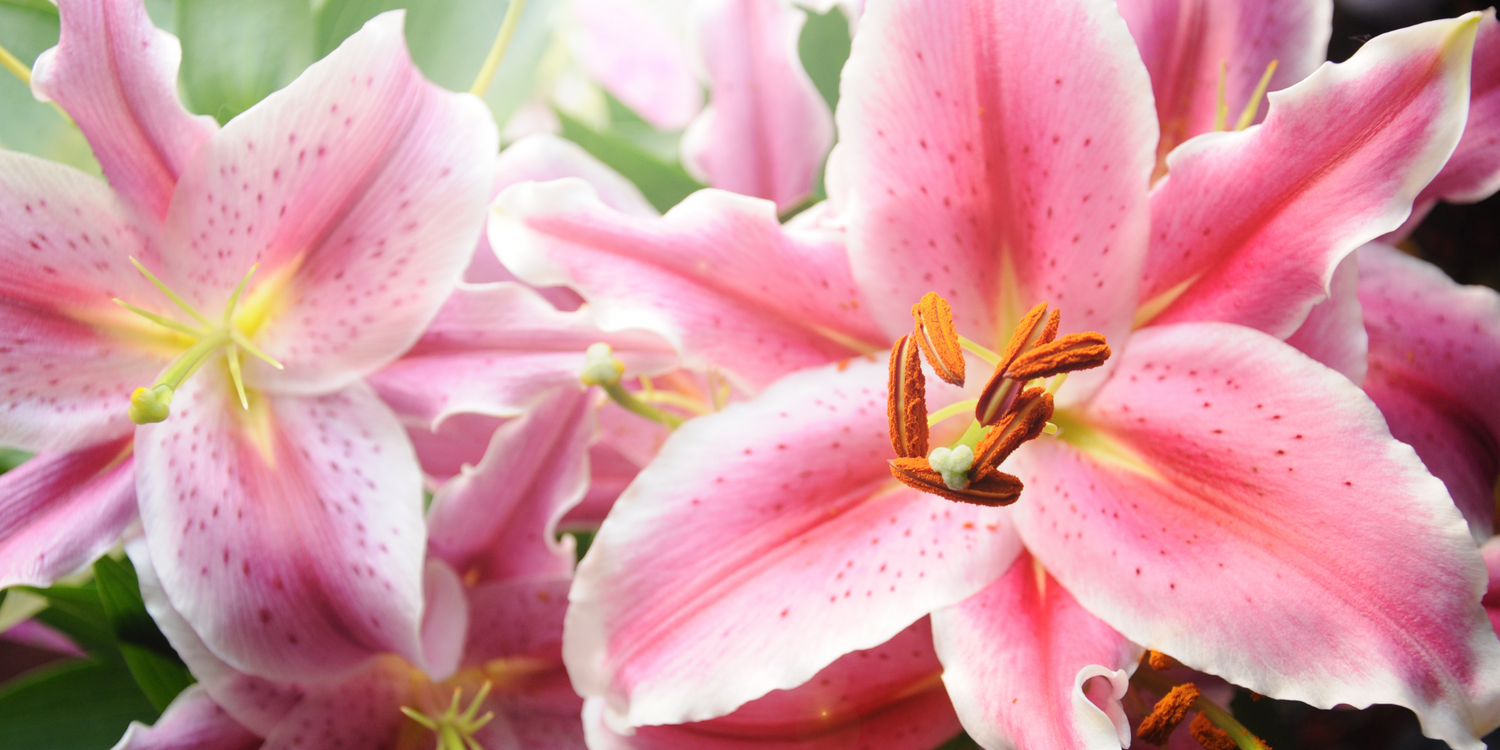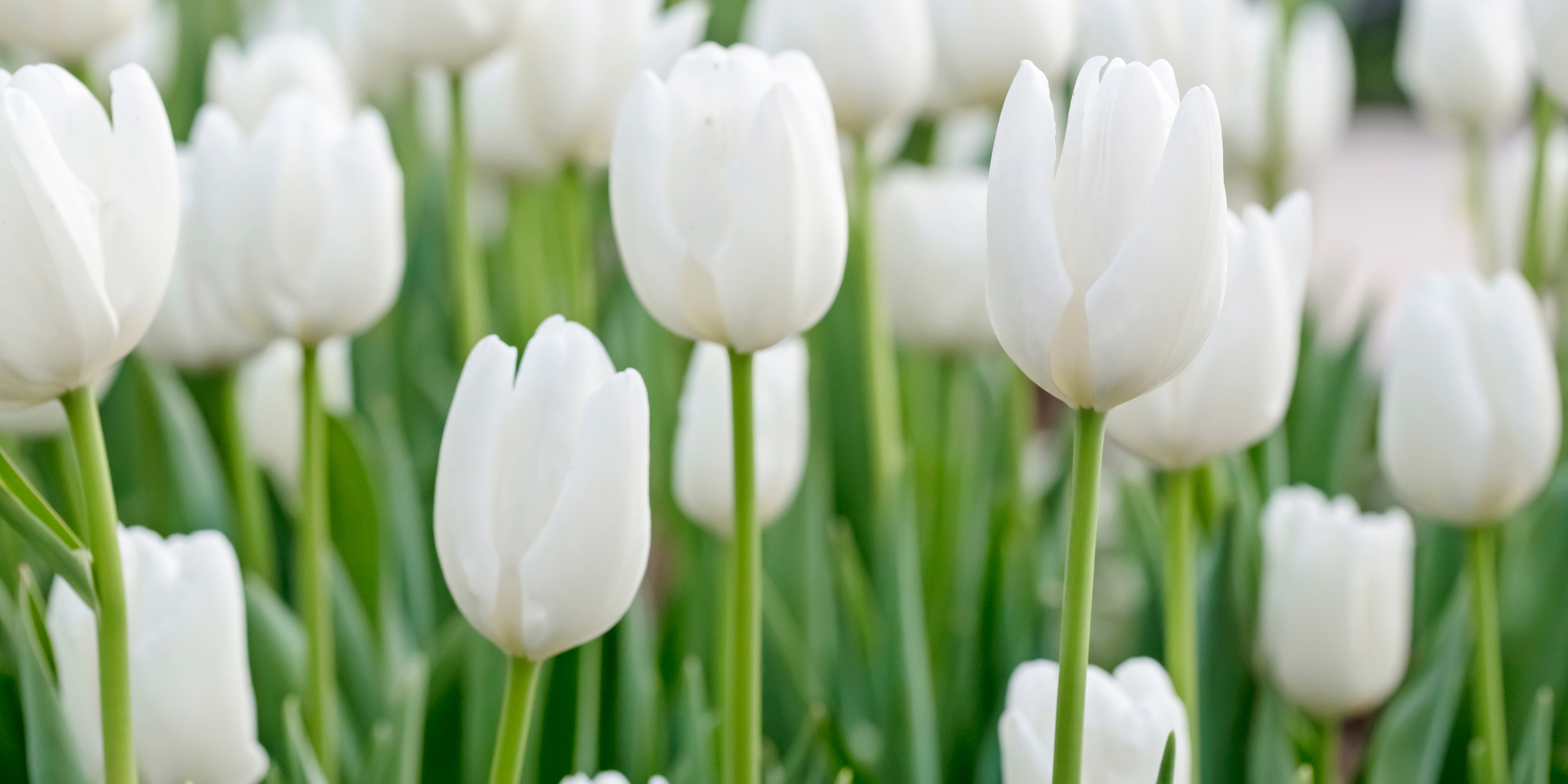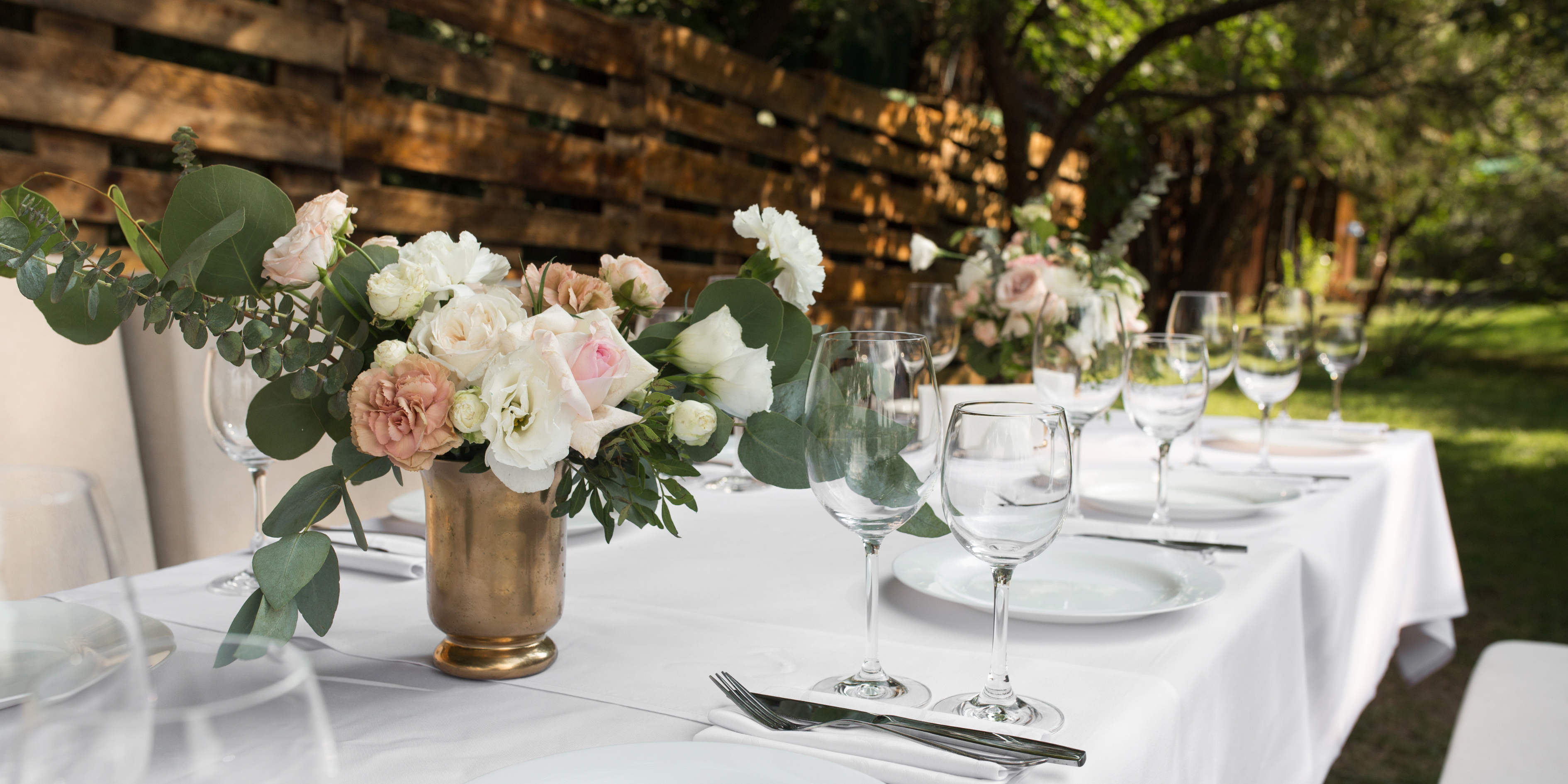The lily flower is known for being dainty, delicate and graceful in its appearance. It comes in a lovely array of colours, and some varieties have a scent like no other.
Lilies are among the world's most popular cut flower varieties, but do you know what lilies represent? Read on to find out!
Lily Flower Meaning & Symbolism
So, what do lilies represent? Over the years, lilies have come to represent purity, life and remembrance. And if you've ever wondered what flower represents new beginnings, the lily flower is the answer to that question, too!
Lilies in Religion & Mythology
Biblically speaking and to Christians, lily symbolism has always been associated with purity, chastity, rebirth, hope, and the Virgin Mary. They also signify how Jesus Christ rose from the dead on the third day after he was crucified.
Familiar with the Book of Genesis? Many also believe that white lilies grew in the Garden of Eden, after Eve cried tears of remorse. Since she betrayed the words of God and offered Adam the apple, this would represent irony, as they were banished from the garden.
According to Greek mythology and tales of Zeus and his wife Hera, the lily became Hera’s flower as it was believed it sprouted from her breast milk. And in Roman mythology, Venus—the Goddess of beauty, love, and desire—had envied the purity of this flower to such an extent that she cursed the lily flower’s centre by raising it sharply like a pistol!

Lily Colours & Meanings
As with most flowers, the exact meaning of a lily can change depending on the colour.
- The orange lily flower has warm tones that imply excitement, honesty, honour, and respect. You might gift this to grandparents who are a big part of your life, or a friend who is always showing their loyalty, or to someone you're excited for (a new parent, graduate or homeowner, perhaps)
- The white or cream lily flower is symbolic of modesty, commitment, and purity, but is often given to show sympathy as well as feelings of rebirth. White lilies feature prominently in many sympathy and condolence bouquets. You can also send these to happily married couples or as a newborn baby gift
- The red lily is vibrant and passionate with its fiery petals. If you harbour deep, powerful, romantic feelings for someone, this is the flower to give them and to show the dedication of your heart. Red lilies make a fantastic alternative to red roses on romantic gifting occasions, such as Valentine's Day
- Purple lilies are a great symbol of success, pride, and accomplishment, as well as royalty and privilege. If a close friend has graduated from university, for example, a bouquet of purple lilies is a great way to show you're proud of them
- The pretty pink lily is beautiful for showing how much you admire someone or are infatuated with them. Gift these on the first date! They're also perfect for showing love in a non-romantic way. Pink lilies make a lovely gift for mum or grandma on Mother's Day, or even for your best friend on her birthday
- The yellow lily is as bright and cheerful as sunlight, and often is gifted to show cheerful support, thankfulness, and friendship. A bouquet of yellow lilies will brighten someone's day much like a bunch of sunflowers; send them to someone who's been unwell, or who's been feeling a little down lately
- Black lily symbolism is particularly interesting. Black flowers are rare, and black lilies are no exception. Black flowers are usually a very, very deep shade of purple or red rather than true black, and always have an air of mystery and elegance and power about them. They should not be gifted half-heartedly. The black jewel is one of the darkest shades of lily you can buy.

Lily Flower History & Insights
Where did lilies originate?
Most lilies originated in parts of the northern hemisphere, including Taiwan, Japan, China, North America, the Middle East and the Balkans. Today, The Netherlands is the world's biggest producer of lilies for the flower trade, followed by France, Chile and the United States.
Lilies are among the oldest known cultivated plants in the world. Images of lilies have been found in ancient Minoan frescoes dating back to 1580 B.C on the island of Crete. Bulbs of the Madonna lily flower were used to make ointments in Anatolia in the 2nd millennium. The ancient Romans and Greeks also enjoyed growing the lily for medicinal purposes, and of course had their respective myths about the flower's origins.
There are about 80 to 100 natural or wild lily species under the umbrella of the Liliaceae family. These include Lilium candidum (the Madonna lily), Lilium longiflorum (Easter lilies), Lilium regale (the regal or royal lily), and Lilium lanciflorum (tiger lilies, though this name is applied to several other lily types).
Lily hybridisation
Once upon a time, lilies were incredibly rare and hard to grow. They could only be afforded by the very wealthy.
Between the 1930s and 1950s, a sort of "lily revolution" began, when Dutch horticulturist Jan de Graaff began hybridising these once temperamental and exotic blooms. These hybrid lilies would be hardy and lower maintenance than their wild forebearers, and are part of the reason why lilies can be easily grown all over the world today.
Many of the lilies we know and love today are hybridised. They are split into 9 divisions. Some of the most commonly known are:
- Asiatic lilies (division I), which derive from native Asian lily species and are among the easiest to grow in home gardens
- Oriental lilies (division VII), which are known to be fragrant and are sometimes called "stargazer lilies" due to the way their flower heads tend to look up
- Aurelian trumpet lilies (division VI), which are unscented but come in a range of lovely colours and have distinctive trumpet-shaped flower heads
- Candidum hybrid lilies (division III), which includes most European lily varieties, including the famed white Madonna lily
- Longiflorum hybrid lilies (division V), which result from a cross with Lilium longiflorum, a lily endemic to Taiwan and Japan's Ryukyu Isalnds. L. longiflorum is more commonly known as the Easter lily.

Lilies that aren't lilies
There are many flowers which take the name "lily", without actually being true lilies (meaning they don't belong to the Lilium genus).
Gymea lilies (pictured above), which are endemic to coastal regions of NSW, are not lilies at all and belong to the genus Doryanthes. Other well-known non-lily lily examples include Calla lilies, which belong to the genus Zantedeschia; Peruvian lilies, which are of the Alstroemeria genus and also go by the same name; the Lily-of-the-Valley, which belongs to the genus Convallaria; and water lilies, which fall under the genus Nymphaeaceae.
Additionally, tulips are close relatives of lilies, with both belonging to the Liliaceae family.
Are there any medicinal uses for the lily?
Dried lily flowers are thought to have many health benefits. Dried lily flower roots can be made into an ointment to heal burns and prevent scarring.
The Madonna lily, in particular, has been used historically to treat a range of ailments, including age-related conditions, ulcers and burns.
Lilies have been used to support heart health by stimulating arteries and regulating heart rate, to treat oral thrush as part of a mouthwash, to assist in childbirth contractions, help coughs, treat inflammation, treat eye conditions such as conjunctivitis and sensitivity, and more.
However, this flower is not meant to be a substitute for recommended medication from doctors, so always consult your health professional before using the lily medically.
Can you eat the lily flower?
As well as being visually appealing, true lilies are completely edible. All parts of the lily, from the bulb to the leaves to the petals, can be safely eaten.
Lilies are bulb plants, similar to onions and garlic, and Asian cultures, such as the Chinese, use them as flavour enhancers. Delicious!
Likewise, the petals can be made into salads for flavour and to add colour, and their buds, leaves, and shoots can be added to stir-fries, broths, or soups. A delicious dish is the Hakka Style Steam Chicken with dried lilies for taste.
Lily flower teas have also been brewed and used as a remedy for wrinkles and signs of aging.
As with all edible flowers, you should ensure the flowers are safely grown and intended for consumption before eating them. You should not eat lily flowers from a bouquet you've received, for example, as you don't know what pesticides or other harmful things may be present.
Are lilies poisonous?
Although true lilies are safe for humans to eat, they are incredibly toxic to cats. Every part of a lily flower is poisonous to a cat, including the petals, stems, leaves and even the water in the vase if you have them at home.
Simply licking lily pollen off their fur or inadvertently biting into a lily flower can give your cat severe vomiting. If left untreated, acute renal failure can occur and result in death.
Lilies may also be toxic to dogs and horses. If you want to grow lilies in your garden or bring them into your home, ensure you keep the flowers out of reach of your furry friends.

Popular Types of Hybrid Lilies
As we mentioned earlier, there are several divisions of hybrid lilies, resulting in thousands of different types of lilies. Here are some of the most popular.
Oriental Hybrids
Stargazer
Though Oriental lilies are often generally called "Stargazer lilies", there is a specific hybrid called Stargazer. One of the world's most popular lily varities, these brilliant pink flowers have a lovely perfume and upward-facing petals.
Casablanca
With large, bowl-shaped, milky white flowers and a heavenly scent, these lilies are highly regarded and well-suited to floral arranging
Magic Star
These double oriental lilies have two layers of large, ruffled petals. They also have no pollen, which means you don't get the usual mess and staining associated with lilies.
Red Eye
With huge, fire engine red petals with white edging, Red Eye lilies are truly breath-taking. Plus, they smell amazing.
Asiatic Hybrids
Vermeer Lily
This Asiatic hybrid lily is a feminine, pastel-pink that fades to white on each petal. As beautiful as they are, they’re fragile and need to be protected from strong winds.
Red Power Lily
The red power lily is a deep, dramatic red, sprouting into a bright crimson at its edges.
Black Charm Lily
If you love dark flowers, the Lilium Black Charm has a deep blackberry shade and is upward-facing. These petals work wonders for adding contrast to gardens or floral arrangements.
Pearl Mixed Lily
The Pearl Mixed Lily has blossoms of different colours, such as pearly pink, luminous yellow and dove white.
Martagon Hybrids
Orange Marmalade Lily
These hybrid petals curve upwards, and are the colour of mandarins. The orange marmalade is unique for being able to blossom up to 30 blooms on a single stem.
Manitoba Morning Lily
This hybrid lily is eye-catching due to its pink-red petals harbouring a creamy yellow centre. The Manitoba morning is curved like the Orange Marmalade, however, the bulbs dangle below it like a chandelier. Up to 50 can bloom on one stem.
Arabian Knight Lily
This lily is known for having a unique two-tone of gold and mahogany blossoms and interestingly enough has downward-facing petals. Dramatic in any garden, 50 flower heads can bloom on one stem.
Fairy Morning Lily
These lily hybrids are almost ethereal and are so named because they look like dancing fairies! With pink blossoms that fade to peach at the centre, they can grow up to 30 flower heads on a single stem. Some have mahogany spots underneath their petals.

How to Care for Lilies
Most lilies can stay healthy for over two weeks once cut. At Floraly, we send our lilies to you while they're still in bud, so that you can watch them bloom at home and also so that they last for as long as possible.
Lilies are very low-maintenance, but there are still some simple care tips you should follow to keep them sitting pretty:
- Firstly, you’ll want to place your lilies and their stems in lukewarm water. This keeps them hydrated while you prepare the vase
- Cutting at a 45-degree angle, slice 1-2 inches from the bottom of each stem, and do so while they’re submerged in water to prevent the formation of air bubbles. Cutting stems at an angle also increases the area for water absorption, to keep your lilies hydrated
- Take off any leaves that will sit below the water line in your chosen vase, as this can cause rotting and bacteria growth. Keep in mind you want to leave at least four sets of leaves sitting above the water to keep the lilies fresh, and to help the bouquet look full
- Fill your vase with fresh water, and add in your flower food or a mix of lemon juice, sugar, and chlorine bleach
- Once the lilies open, you may want to trim the antlers (the yellow bulb that holds pollen), as these can stain. Dry pollen can easily be brushed away, from a hard surface, but it might be harder to remove from a soft material, such as a rug
- Place your lilies away from direct sunshine, strong airflow and sources of heat or cold (such as air conditioners and heaters)
- Change the water every few days so your lily bouquet stays beautiful.
Why Give Someone a Lily Bouquet?
There are many variations of lilies, almost as many as reasons to gift these delicate blooms. With Floraly, you have the flexibility to send the loveliest lilies to someone’s doorstep.
White lilies are popular in sympathy and condolence bouquets, as well as in wedding and new baby bouquets. A bouquet of pink lilies would make a wonderful gift for mum on Mother's Day, while a bunch of red lilies makes a unique alternative to red roses on Valentine's Day. A mix of red and white lilies could be a cute Christmas gift idea, too.
With their big, showy blooms, lilies are perfect for graduations (think of the photos!) and many other celebratory occasions.
Just ensure your loved one doesn't have a cat, before you send them lilies.
***
If you’d like to know more about a range of flower species, have a read of our articles on the aster flower, the lotus flower, or which flowers represent happiness. You’re bound to discover something magical about your favourite blooms!



